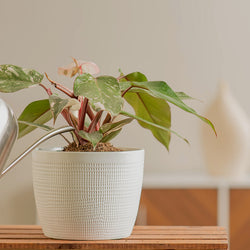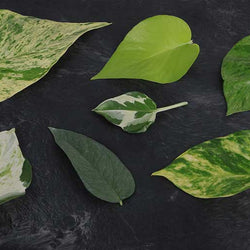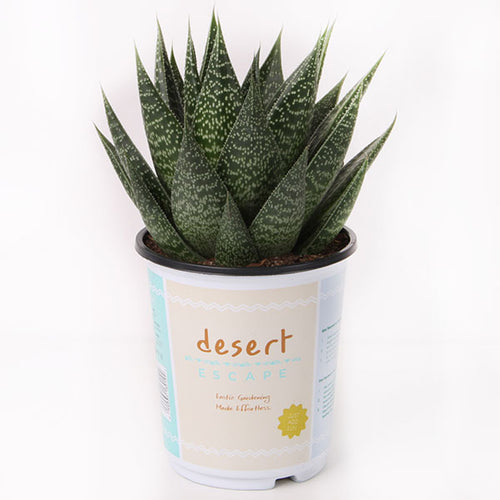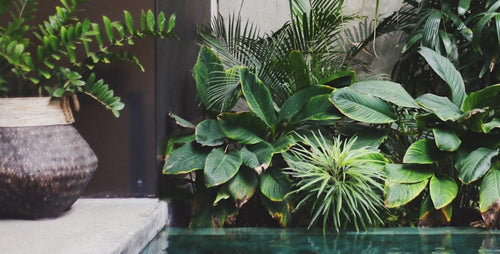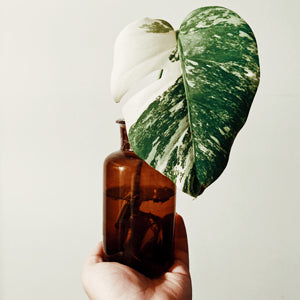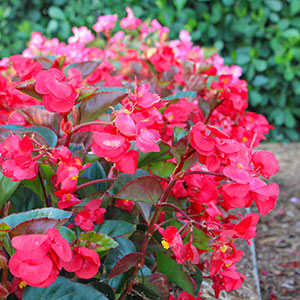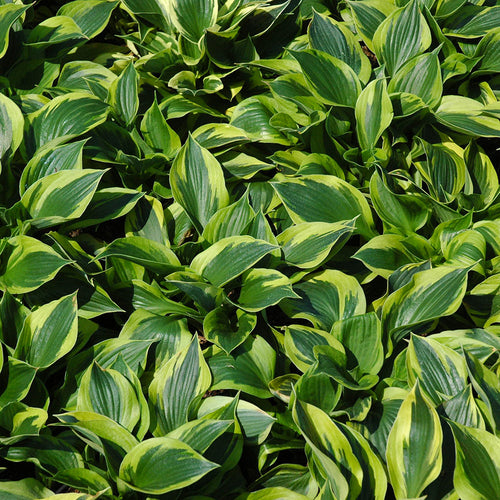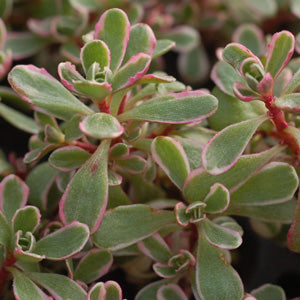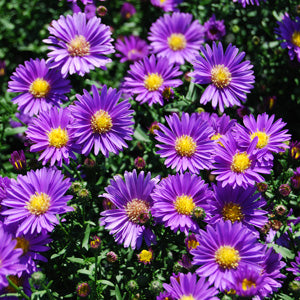By Doug Jimerson
Midsummer can be the best and the worst of times in your garden. Here are some tips to help you focus on the best of times.
 1. Deadhead Perennial Flowers
1. Deadhead Perennial Flowers
If you haven’t done so already, remove the faded blooms from your spring perennial flowers such as peonies, bearded iris, and Asiatic lilies. When you remove the dead flowers, you make plants look better and you prevent them from trying to make seed that can sap the plant’s energy. Removing faded perennial flowers encourages the plant to send energy to its roots so it will bloom better next year.
Trial Garden Tip: Some perennial flowers, such as salvia, will often bloom again later in the season if you clip away the faded blooms now. Trim them back by one third of their height.
2. Harvest Daily
As summer heats up, vegetable and fruit crops go into overdrive in the North. Check your garden and harvest daily. Vegetables such as cucumbers, green beans, zucchini, eggplants taste better when harvested young. Strawberries, raspberries, and blueberries also benefit from daily picks; harvest at peak flavor.
Trial Garden Tip: Cover berries or other prized produce with netting to protect them from hungry birds or rodents.
Note: In subtropical areas such as Central/South Florida, later this month is a good time to start vegetable seeds indoors (then transplant them outdoors come fall when temperatures start to cool).
3. Pot Up Succulents and Cacti
Succulents and cacti love hot, dry weather. These easy-care beauties thrive in adverse conditions and won’t die if you leave them unattended when you go on vacation. They come in an almost unlimited selection of shapes, sizes, and colors so you can create your own magical miniature landscapes in pots and planters.
Trial Garden Tip: Cacti and succulents can tolerate almost anything -- except wet soil. Make sure your pots have plenty of drainage holes to allow excess water to escape.
4. Plant a Personal Oasis with Container Plants
Transform an area of your yard into a personal getaway. Find a comfortable chair, surround it with container plants, such as palms, add a small fountain, and kick back and relax! When fall rolls around, move your palms indoors to enjoy all winter long. Some of the easiest palms include: Majesty, Chinese Fan, Cat, Areca, Lady, Kentia, Christmas, and Fishtail.
Trial Garden Tip: In the fall, don’t wait until frost threatens to bring your palms indoors. Move them inside several weeks before frost is predicted so they can slowly become adjusted to indoor conditions.
5. Mulch, Mulch, and Mulch Some More
A wise gardener once said: “You can never have enough mulch.” Actually I made that up, but the lesson is true. Mulch is the key to a low-maintenance and healthy garden. By adding several inches of mulch over your beds and borders, you’ll increase soil moisture, reduce weed competition, and improve the quality of fruits and vegetables. Mulches come in two classes: those that decay in one season (such as straw, newspaper, or leaves) and those that take a few years to break down (such as bark chunks, cocoa bean hulls, and shredded bark). Use quick-decaying types in vegetable and annual flowerbeds so that you can till it all under after the season is over. Long-lasting mulches are best used in permanent landscape settings.
Trial Garden Tip: Buying mulches by the bag can become expensive. Look for sources that sell mulch by the truckload and deliver directly to your home.
Get more tips to keep your garden weed free.
6. Replenish Container Plants
By midsummer, cool-weather annual flowers such as pansies and snapdragons have stopped blooming. Remove them and replace with heat-loving container plants such as lantana, pentas, and zinnia. If your cool-weather annuals were growing in a mixed container, tease them out of the pot trying not to disturb the neighboring plants. Then add a bit of fresh soil, tuck in a blooming refill, and water thoroughly.
Trial Garden Tip: Some heat-loving annuals, such as petunias and calibrachoa, respond well to a midsummer haircut. Trim back established plants to encourage new growth.
7. Reduce Biting Insects
Don’t let flies, mosquitoes, and other biting insects keep you indoors. Instead, repel these nasty creatures naturally. One of the best ways to keep them at bay is with a ceiling fan. Recent studies have shown that a ceiling fan is more effective than bug spray in eliminating flying insects from outdoor spaces. Another way to reduce insect populations is to attract bug-hungry songbirds to your landscape with a birdbath. In midsummer your feathered neighbors will flock to a source of cool, fresh water; while visiting, they’ll eat their weight in bugs.
Trial Garden Tip: You can also plant perennial flowers that attract birds. Good choices include coneflower, black-eyed Susan, coreopsis, and liatris.
8. Refresh the Shade
Brighten shady spots in your backyard with shade-loving perennials and annuals with colorful foliage. Hostas, for example, look terrific in pots and are available in many colors, shapes, and forms; you can create an amazing garden with them alone. Other shade dwellers with brightly colored leaves include caladium, coleus, and heuchera.
Trial Garden Tip: Some large trees, such as Norway maples, are almost impossible to plant under because they have a shallow root system. If plants won’t thrive in the soil under your trees, replace them with container plants.
9. Take a Tour
Summer is a great time to harvest new ideas from other gardens and get garden bed ideas. Take advantage of local garden tours, public gardens, or parks to discover tips and tricks you can use in your own backyard gardens. And, if you take a summer vacation, do some research before you go and find out if there are any public gardens nearby that you can add to your itinerary. And be sure to bring a camera along to document what you see. Take note of interesting garden bed ideas, plant combinations, new introductions, or techniques you see as you tour.
Trial Garden Tip: The Garden Conservancy sponsors an annual Open Days program that showcases the best private gardens across the country. Check here to see what’s happening in your region.
10. Solarize Soil
In warm climates, such as Florida, now is a good time to solarize your soil to eliminate weeds, diseases, and nematodes before fall planting. Spread a layer of clear plastic over the beds and leave it in place for six weeks. For best results, the soil should be slightly moist before covering it with plastic. The sun raises the soil temperature and kills pathogens and pests.
Trial Garden Tip: Black plastic does not work as well as clear plastic: It reflects heat instead of allowing it to pass through to the soil.
July Gardening Questions?
We love to talk to other gardeners. Email us your questions and we'll have one of our experts get back to you!
Midsummer can be the best and the worst of times in your garden. Here are some tips to help you focus on the best of times.
 1. Deadhead Perennial Flowers
1. Deadhead Perennial FlowersIf you haven’t done so already, remove the faded blooms from your spring perennial flowers such as peonies, bearded iris, and Asiatic lilies. When you remove the dead flowers, you make plants look better and you prevent them from trying to make seed that can sap the plant’s energy. Removing faded perennial flowers encourages the plant to send energy to its roots so it will bloom better next year.
Trial Garden Tip: Some perennial flowers, such as salvia, will often bloom again later in the season if you clip away the faded blooms now. Trim them back by one third of their height.
2. Harvest Daily
As summer heats up, vegetable and fruit crops go into overdrive in the North. Check your garden and harvest daily. Vegetables such as cucumbers, green beans, zucchini, eggplants taste better when harvested young. Strawberries, raspberries, and blueberries also benefit from daily picks; harvest at peak flavor.
Trial Garden Tip: Cover berries or other prized produce with netting to protect them from hungry birds or rodents.
Note: In subtropical areas such as Central/South Florida, later this month is a good time to start vegetable seeds indoors (then transplant them outdoors come fall when temperatures start to cool).
3. Pot Up Succulents and Cacti
Succulents and cacti love hot, dry weather. These easy-care beauties thrive in adverse conditions and won’t die if you leave them unattended when you go on vacation. They come in an almost unlimited selection of shapes, sizes, and colors so you can create your own magical miniature landscapes in pots and planters.
Trial Garden Tip: Cacti and succulents can tolerate almost anything -- except wet soil. Make sure your pots have plenty of drainage holes to allow excess water to escape.
4. Plant a Personal Oasis with Container Plants
Transform an area of your yard into a personal getaway. Find a comfortable chair, surround it with container plants, such as palms, add a small fountain, and kick back and relax! When fall rolls around, move your palms indoors to enjoy all winter long. Some of the easiest palms include: Majesty, Chinese Fan, Cat, Areca, Lady, Kentia, Christmas, and Fishtail.
Trial Garden Tip: In the fall, don’t wait until frost threatens to bring your palms indoors. Move them inside several weeks before frost is predicted so they can slowly become adjusted to indoor conditions.
5. Mulch, Mulch, and Mulch Some More
A wise gardener once said: “You can never have enough mulch.” Actually I made that up, but the lesson is true. Mulch is the key to a low-maintenance and healthy garden. By adding several inches of mulch over your beds and borders, you’ll increase soil moisture, reduce weed competition, and improve the quality of fruits and vegetables. Mulches come in two classes: those that decay in one season (such as straw, newspaper, or leaves) and those that take a few years to break down (such as bark chunks, cocoa bean hulls, and shredded bark). Use quick-decaying types in vegetable and annual flowerbeds so that you can till it all under after the season is over. Long-lasting mulches are best used in permanent landscape settings.
Trial Garden Tip: Buying mulches by the bag can become expensive. Look for sources that sell mulch by the truckload and deliver directly to your home.
Get more tips to keep your garden weed free.
6. Replenish Container Plants
By midsummer, cool-weather annual flowers such as pansies and snapdragons have stopped blooming. Remove them and replace with heat-loving container plants such as lantana, pentas, and zinnia. If your cool-weather annuals were growing in a mixed container, tease them out of the pot trying not to disturb the neighboring plants. Then add a bit of fresh soil, tuck in a blooming refill, and water thoroughly.
Trial Garden Tip: Some heat-loving annuals, such as petunias and calibrachoa, respond well to a midsummer haircut. Trim back established plants to encourage new growth.
7. Reduce Biting Insects
Don’t let flies, mosquitoes, and other biting insects keep you indoors. Instead, repel these nasty creatures naturally. One of the best ways to keep them at bay is with a ceiling fan. Recent studies have shown that a ceiling fan is more effective than bug spray in eliminating flying insects from outdoor spaces. Another way to reduce insect populations is to attract bug-hungry songbirds to your landscape with a birdbath. In midsummer your feathered neighbors will flock to a source of cool, fresh water; while visiting, they’ll eat their weight in bugs.
Trial Garden Tip: You can also plant perennial flowers that attract birds. Good choices include coneflower, black-eyed Susan, coreopsis, and liatris.
8. Refresh the Shade
Brighten shady spots in your backyard with shade-loving perennials and annuals with colorful foliage. Hostas, for example, look terrific in pots and are available in many colors, shapes, and forms; you can create an amazing garden with them alone. Other shade dwellers with brightly colored leaves include caladium, coleus, and heuchera.
Trial Garden Tip: Some large trees, such as Norway maples, are almost impossible to plant under because they have a shallow root system. If plants won’t thrive in the soil under your trees, replace them with container plants.
9. Take a Tour
Summer is a great time to harvest new ideas from other gardens and get garden bed ideas. Take advantage of local garden tours, public gardens, or parks to discover tips and tricks you can use in your own backyard gardens. And, if you take a summer vacation, do some research before you go and find out if there are any public gardens nearby that you can add to your itinerary. And be sure to bring a camera along to document what you see. Take note of interesting garden bed ideas, plant combinations, new introductions, or techniques you see as you tour.
Trial Garden Tip: The Garden Conservancy sponsors an annual Open Days program that showcases the best private gardens across the country. Check here to see what’s happening in your region.
10. Solarize Soil
In warm climates, such as Florida, now is a good time to solarize your soil to eliminate weeds, diseases, and nematodes before fall planting. Spread a layer of clear plastic over the beds and leave it in place for six weeks. For best results, the soil should be slightly moist before covering it with plastic. The sun raises the soil temperature and kills pathogens and pests.
Trial Garden Tip: Black plastic does not work as well as clear plastic: It reflects heat instead of allowing it to pass through to the soil.
July Gardening Questions?
We love to talk to other gardeners. Email us your questions and we'll have one of our experts get back to you!
